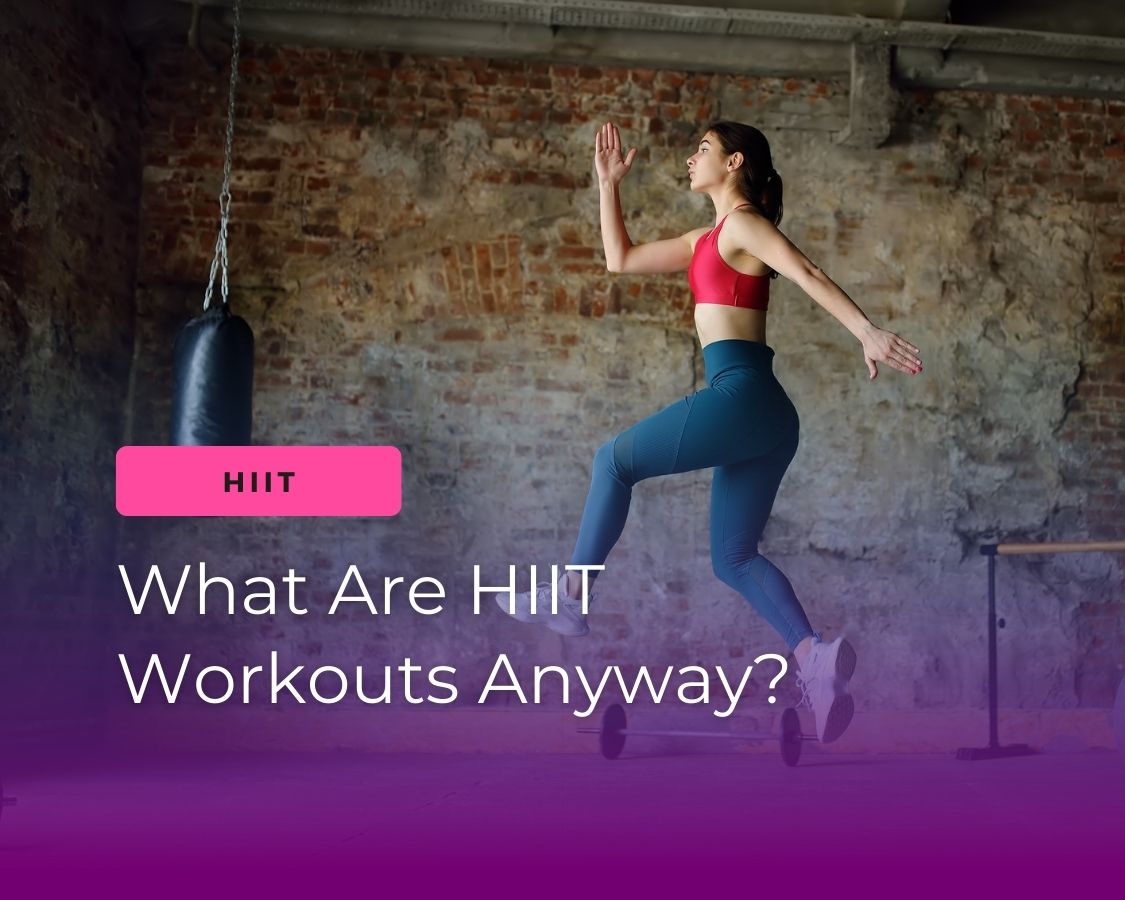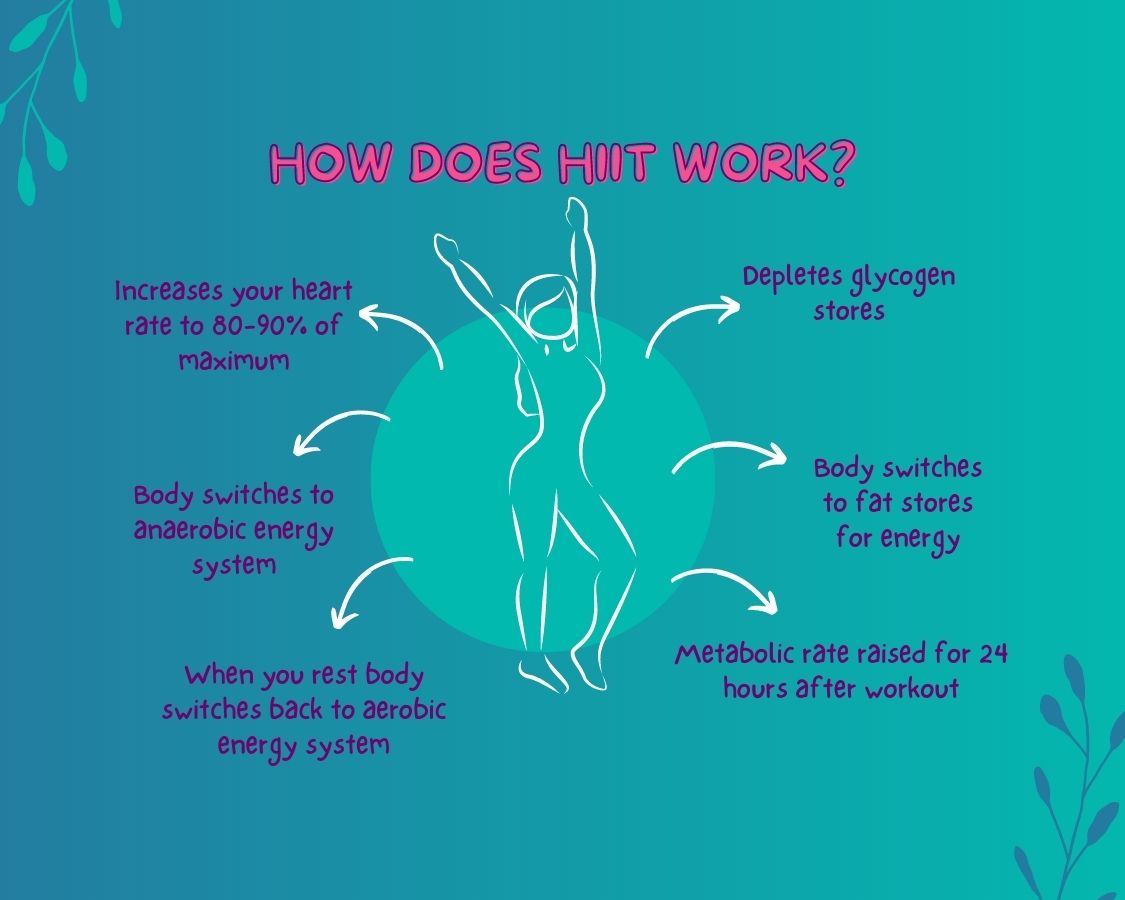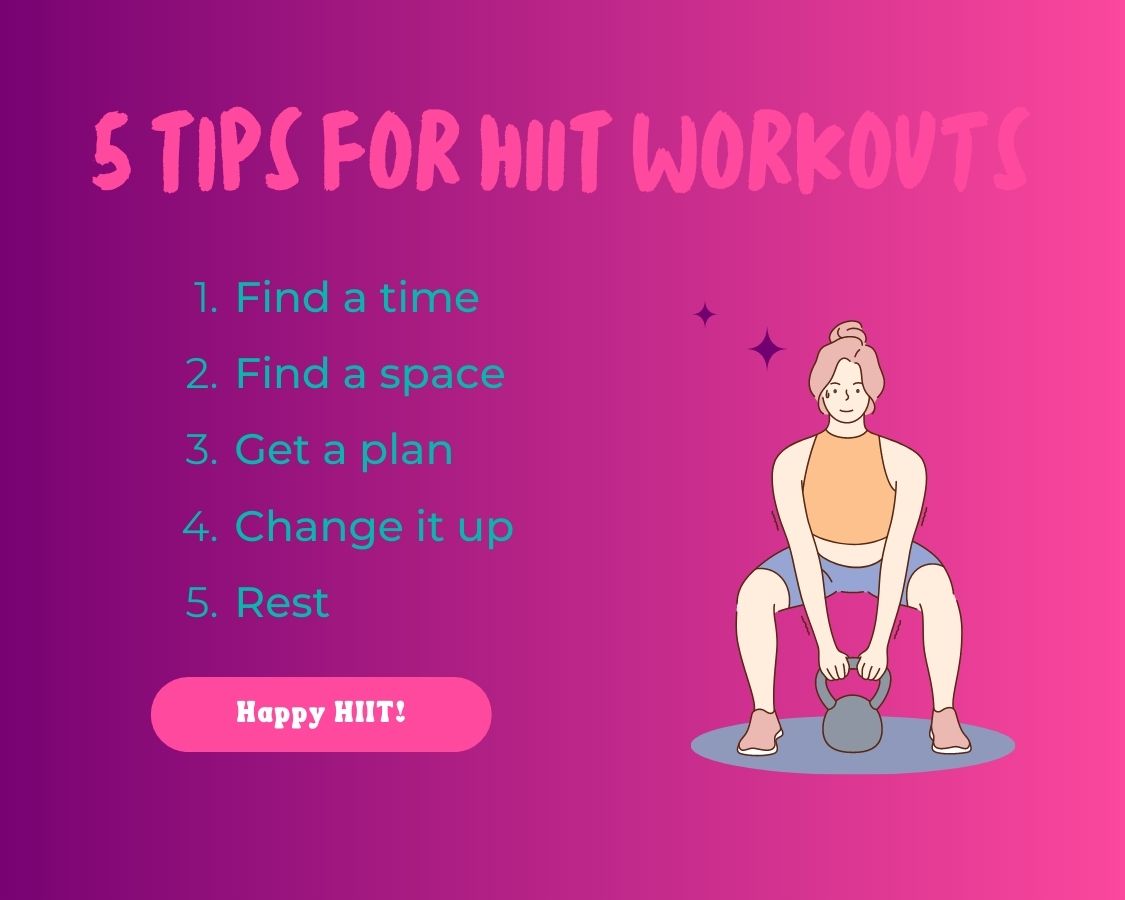- Home
- HIIT Workouts
- What Are HIIT Workouts?
What Are HIIT Workouts? How Do They Work?
We've all heard about HIIT. We may have tried a workout or two. But do we know what they are and how they work? What are HIIT workouts?
Beth's 1 Week Meal Plan

You want to shed a few pounds? Or get really fit? And you’ve heard HIIT, high-intensity interval training is the way to do it.
But, what are high-intensity workouts? How does they work? And why are they so effective?
You know it’s something to do with work periods followed by a recovery period. But surely there’s more to it than that?
Well, if you’ve ever wondered, your wait is over because I’m going to explain it all.
If you don’t fancy going into the supper technical details of HIIT, try one of these pages instead.
If you’re still here, I’m going to assume you want to know the science.
Let’s do this...
What Are HIIT Workouts: Why is It Important to Know?
Just in case you’re not convinced you need to know the science,
remember...
Knowledge is power.
The more you know, the more you’re empowered to make your own decisions on a workout.
You can decide what you want to do and how you want to do it.
You’re not doing something just because I, or any other personal trainer is telling you you should. You’re doing it because you know it’s important. Or that it’s effective. Or that it’s going to get you to your goals.
You’re in the driving seat.
Knowledge is power.
But, having said all of that, if you’re just not interested in the technical side, that’s not a problem. Just head straight to the workouts.
What Are HIIT Workouts: The Basics
At a very basic level, high intensity interval training is about
breaking up your workout into short bursts of intense exercise
followed by short rest periods.
The work interval is kept short so that you can give maximum effort. And a few seconds rest means you’re ready to go again.
Ready to give it your all.
HIIT sessions are a great way to improve your fitness levels, lose weight, or improve your general health.
But why?
What makes HIIT so good?
What Are HIIT Workouts: Let’s Get Technical
What makes HIIT so tough, such hard work, is that it raises your
heart rate quite considerably. In fact it raises it, or should raise
it, to between 80-90% of your maximum heart rate.
That’s a lot. And you will be breathing very heavily.
But it’s this that gets your body adapting.
Working at such a high intensity forces your body into it’s anaerobic energy system, because it just can’t get the oxygen in quick enough to work aerobically.
But when you’re in the rest period and your heart rate comes down slightly, it goes back to it’s aerobic system.
This is what makes HIIT unique.
Traditional, steady-state cardio is thought of as aerobic exercise and it works your aerobic system. You would then need to do something like weight training to work your anaerobic system. But HIIT, works both. It increases your fitness in both energy systems. Not just one.
It also forces your body to use fat stores for energy, because it depletes other sources of stored energy.
But, and this is key, it’s not just at the time of your workout.
The hard work your body has to do doesn’t stop when you stop your session.
The waste products from anaerobic respiration, lactic acid, hydrogen ions and hormones like adrenaline have to be cleared. Your body temperature and heart rate have to return to normal.
All of this post-workout effort is known as excess post-exercise oxygen consumption and it can keep your metabolic rate elevated, that’s the rate your body burns calories, way after you’ve stopped exercising.
And that is why HIIT is one of the most efficient ways to workout.
What Are HIIT Workouts: Is It Strength Training?
The
short answer to that is no.
HIIT primarily concentrates on your cardiovascular system. Yes, it does work your anaerobic energy system, similar to weight training but, it doesn’t make your muscles stronger.
For that you need to overload your muscles, with weight, although it can be done with bodyweight.
“But, HIIT can be done with bodyweight, so isn’t that making my muscles stronger?”
No, it’s not. Not in the same way as strength training would.
When you’re doing squats in a HIIT workout you’re doing them quickly. Up, down, up down. Yes, you’re working your muscles, but you’ll be getting out of breath. That’s your cardiovascular system.
If you were to do a squat to build the strength in your thighs, your glutes and your hamstrings, you would have to make the squat harder not quicker.
You do that by adding weight, or slowing the movement down.
Try this...10 squats as quickly as you can. Breathing a bit heavier?
Once your breathing has returned to normal try doing 1 squat, but instead of doing it as quickly as you can, do is as slowly as you can. Down for a count of 6, hold for a count a 6 and up for a count of 6. These are known as the devil squat.
How did that feel?
Any different?
I bet you weren’t breathing quite as hard, but your muscles were starting to feel it.
That’s the type of movement you need for strength training. Not quicker. Slower and harder. Taxing your muscles.
The good thing about HIIT is that has been proven to maintain the muscle mass you have.
That’s something that’s not that easy, especially when you’re trying to lose weight. But HIIT helps. It won’t necessarily build the muscle, but it will help maintain it.
If you want to learn more about HIIT and strength training read HIIT vs Strength Training.
What Are HIIT Workouts: The Benefits
I've covered all of the benefits of HIIT workouts in detail and I don't want to repeat myself here. But just in case you don’t want the detail, I’ll say that it has many many health benefits.
Lower blood pressure and blood sugar. Great for weight loss, particularly getting rid of stubborn body fat.
It’s also great for heart health.
Yes, it has many many benefits to your overall health.
If you are concerned about heart disease, high blood pressure or insulin sensitivity, please please please speak to a doctor before you try any workout. Whether that’s HIIT, boxing, dancing, whatever it is. Speak to a doctor and then a personal trainer (feel free to give me a shout). Tell them your medical history so they can design you a specific and safe plan.
What Are HIIT Workouts: What Do You Need?
One of the great things about HIIT is that you can do it anywhere.
Your home, the gym, the park. Wherever you have space you can do a HIIT workout.
And you don’t need any fancy equipment either.
It can all be done with just your body weight.
But, adding in some equipment every now and then can really help to spice up your workout and keep them interesting.
A jump rope, a kettlebell, some dumbbells, a stationary bike. That’s just a few examples, but you get the gist.
You can use anything you can get your hands on.
And if you can’t get your hands on any traditional exercise equipment, have a look at what you can substitute from around your home.
You really don’t need anything fancy.
What Are HIIT Workouts: My Top Tips
HIIT training is a great way of getting in a quick workout. They
are tough, yes, but they’re worth it.
If you’re going to give it a go, and I think you should, here are my top tips before you get started:

Find a time. As I keep saying, workouts don’t have to be long to be effective, they have to be consistent. So find a time in your day, your week that you can consistently workout. I find it easier when little K is with grandparents. That way I know I have the time to finish my workout properly. When is good for you?

Find a space. HIIT workouts can be done in even the most limited space. But you need somewhere you’re not going to be interrupted. A dedicated room would obviously be best but we don’t all have the space for that. So find somewhere. Your living room, your garage, your garden, your local park. HIIT workouts can be done anywhere.

Get a plan. HIIT training is great, but you need to have an overall plan. Your body can get used to even the most intense workout. So you need to have an overarching plan. Something that’s progressive. Something that programmes in other types of exercise and some recovery. That way you’ll keep seeing progress.

Change it up. HIIT is hard. It is very taxing for your body. So you need to make sure you’re recovering properly between your workouts. You want to plan roughly a day in between HIIT sessions. A day where you concentrate on active recovery, yoga, walking, possibly a little jog. Something more like traditional steady state cardio. A moderate-intensity exercise.

Have a rest. Make sure you have at least one day in the week where you have complete rest. Yep, I’m telling you to have a day off. Sit on the sofa. Snuggle up with your kids, your hubby and watch a film.
What Are HIIT Workouts?
I hope that clears up exactly what HIIT workouts are and why they
are so good to do.
If it doesn’t and you still have questions please do get in touch.
Otherwise, let’s get going with some HIIT training.
And if you want free HIIT workouts delivered straight into your inbox, then remember to sign up for my newsletter. You'll be the first to know about new, fun and effective workouts I've uploaded....
Get Your Ultimate Eight Week HIIT Workout Plan
Get fitter, stronger and leaner in just eight weeks with my printable HIIT workout Plan. Just 30 minutes a day is all you need.
Want to know more before you sign up?
Check out Printable HIIT Workout Plan to learn all about the plan, what's involved and why you should get it.








